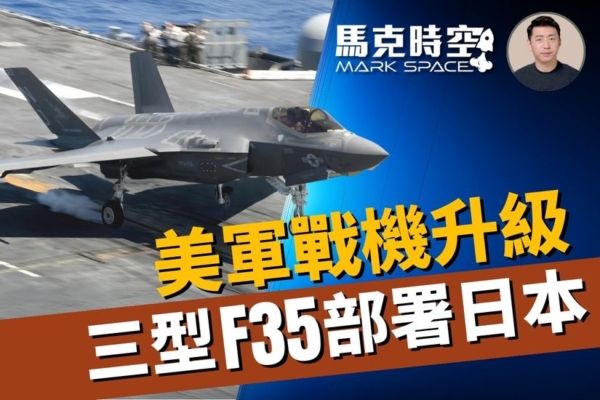Amid continued military actions by the Chinese Communist Party in the Taiwan Strait and South China Sea, the United States is also strengthening its military presence in Japan. As the US Navy’s USS George Washington aircraft carrier is set to deploy to Japan, on July 15th, the US Navy announced that it will be sending a squadron of F-35C fighter jets to the Iwakuni Air Base in Japan to join the Carrier Air Wing 5.
According to a press release from the US Navy, the F-35C fighters from Strike Fighter Squadron 147 will replace the F/A-18E Super Hornets of Strike Fighter Squadron 115. Additionally, the Fleet Logistics Multi-Mission Squadron 30 will be using V-22 Osprey tiltrotor aircraft to replace the aging C-2A Greyhound transport aircraft.
Currently embarked on the USS Ronald Reagan aircraft carrier, which is scheduled to return to the US for maintenance later this year, Carrier Air Wing 5 will transition to the USS George Washington upon its arrival in Japan, serving as a forward-deployed carrier in Yokosuka for the US military. Upon the carrier’s arrival, Carrier Air Wing 5 will move to Iwakuni Air Base, a US Marine Corps air station where two F-35B squadrons are normally stationed.
The F-35C variant is specifically designed for aircraft carrier operations, featuring reinforced structures and the widest wingspan among all F-35 models, equipped with an arresting hook to catch on-deck arrestor cables. The F-35C’s wing-fold capability allows for space-saving onboard carriers, enabling them to accommodate more aircraft. The deployment of stealth F-35C fighters to Japan signifies a significant upgrade in the US military’s capabilities and demonstrates its readiness to counter China’s stealth aircraft with fifth-generation technology.
The F-35, also known by its English acronym JSF for Joint Strike Fighter, is developed and manufactured by Lockheed Martin, with 11 countries collaborating on the fifth-generation aircraft program. The F-35 program includes three variants – A, B, and C – tailored for the Air Force, Marine Corps, and Navy respectively. In January of this year, Lockheed Martin announced the completion of the 1000th F-35 aircraft, with a total of 2,389 units ordered by the US armed forces and 1,066 units ordered by 17 other countries. Undoubtedly, the F-35 has surpassed the F-22 to become the most successful fifth-generation fighter in the world.
Furthermore, the US Department of Defense announced on July 3rd a $10 billion upgrade to US Forces in Japan to enhance readiness and address potential conflicts with China. The US Air Force will deploy 84 advanced fighter aircraft to Japan, including 48 F-35As to replace the 36 F-16 fighters at Misawa Air Base in northern Japan, and 36 new F-15EX jets will be stationed at Kadena Air Base in southern Okinawa to replace the 48 old F-15C/D aircraft. An exact timeline for completion of the deployment was not specified by the Pentagon, only vaguely stating it will be executed in the “coming years.”
Starting from December 2022, the US Air Force will gradually retire 50 F-15 fighter jets stationed at Kadena Air Base in order to maintain deterrence by rotating deployment of F-22 or F-35A stealth fighters.
The recent fighter jet upgrades and deployments at US air bases in Japan clearly indicate a focus on China. With Kadena Air Base located only 640 kilometers from Taiwan, supersonic jets could reach the island in just 45 minutes to an hour after takeoff. By bolstering the capabilities at Kadena Air Base, the US military aims to provide timely support in the event of disputes in the Taiwan Strait and South China Sea regions.
This strategic move highlights the growing tensions in the region and the US commitment to maintaining stability and security in the Asia-Pacific area.

